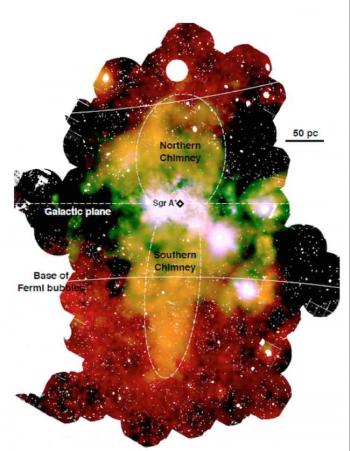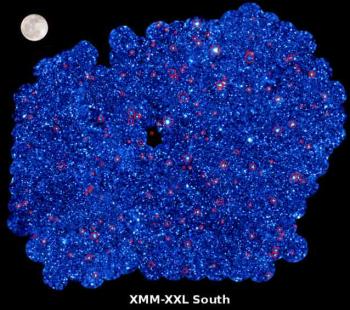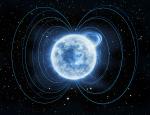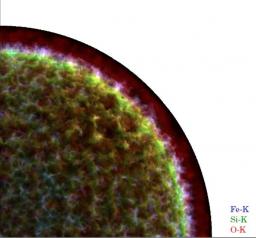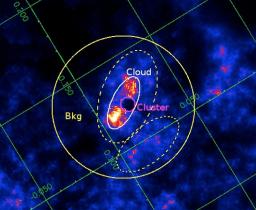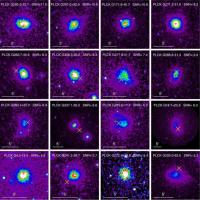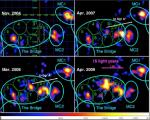Mar 20, 2019
Two chimneys of hot gas found around the central back hole
Thanks to the X-ray satellites Chandra and XMM-Newton, an international team including the Department of Astrophysics of CEA-Irfu has just discovered the existence of two bubbles of hot gas escaping to distances of about 500 light-years, on both sides of the massive black hole environment, in the center of our galaxy.
Dec 15, 2015
3D-maps of galaxy clusters
A new 3D map of galaxy clusters has just been published by a research team led by Maguerite Pierre from the Astrophysics Department-AIM Laboratory of CEA-IRFU through a survey of two regions of the sky, each covering about 25 square degrees (about 100 times the area of the full moon).
Aug 15, 2013
Detection by XMM-Newton of a periodic absorption line close to the surface of a Magnetar
The intense and sporadic activity of Magnetars, rotating neutron stars, has its origin in the current model from their extreme magnetic field.
Nov 05, 2012
Computation of the X-ray emission of a supernova remnant
An international team of astrophysicists, including Samar Safi-Harb and Gilles Ferrand at the University of Manitoba (Canada) and Anne Decourchelle from the Astrophysical Department-AIM Laboratory (CEA Saclay - France), has produced the first 3D simulations of supernova remnants (SNRs) showing the effect of particle acceleration at the wave fronts generated by these powerful X-ray sources in our galaxy.
Oct 09, 2012
New type of cosmic ray discovered after 100 years
Using the European X-ray astronomy satellite XMM-Newton [1], researchers from CNRS [2] and CEA [3] have discovered a new source of cosmic rays.
Jan 29, 2011
Clusters and superclusters billions of light-years away
An international team, including scientists from the Astrophysics Department-AIM and the Particle Physics Department of CEA-Irfu, has just used the Planck satellite to discover galaxy clusters with characteristics that were previously unknown.
May 27, 2010
Molecular clouds reveal a giant outburst of the supermassive black hole at the centre of the Galaxy
The central black hole of the Galaxy, today surprisingly quiet, has undergone, several hundred years ago, a violent phase of activity.
